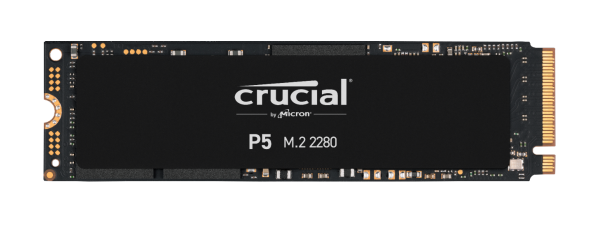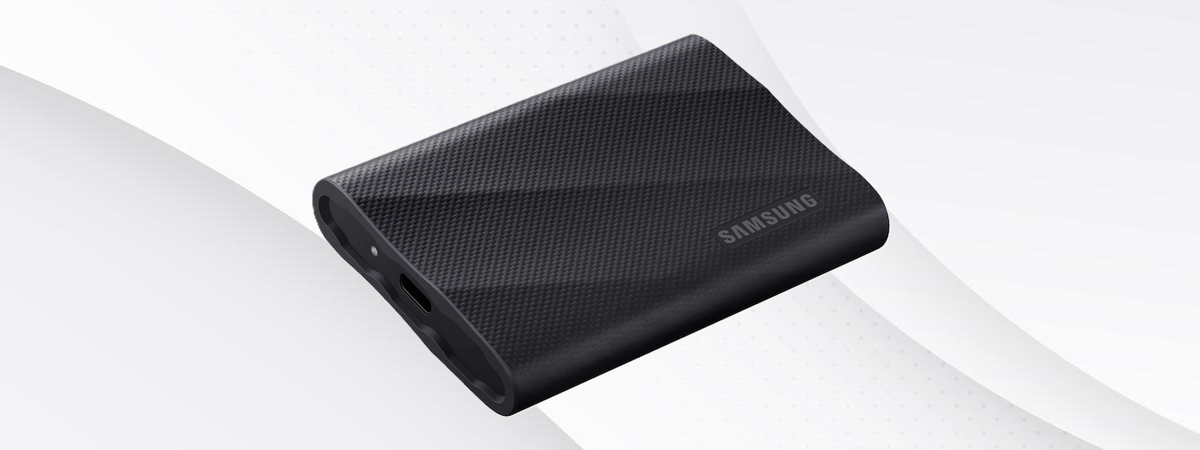
When it comes to high-performance storage, CORSAIR is a name that often stands out, and their latest MP700 PRO solid-state drives are here to attest to that. Available in 4 TB, 2 TB, and 1 TB sizes, these NVMe M.2 drives use the extremely fast PCIe 5.0 interface to deliver incredible speeds for both reading and writing data. If you’re after a high-performance SSD, I’ll tell you more about the 2 TB version of the CORSAIR MP700 PRO in this review. You’ll learn how it handles real-world tasks and how fast it truly is. Let’s get started:
NOTE: CORSAIR refers to the specific model that I tested as the CORSAIR MP700 PRO 2TB PCIe Gen5 x4 NVMe 2.0 M.2 SSD. However, I find it quite frustrating to always use its entire moniker like that. It’s too long and makes everything difficult to read. Therefore, during this review, I’ll often mention this SSD simply as the CORSAIR MP700 PRO.
CORSAIR MP700 PRO: Who is it good for?
The CORSAIR MP700 PRO solid-state drive is an excellent choice for:
- Enthusiasts and professionals who need one of the fastest SSDs available
- Content creators who work with large files
- Gamers looking for extremely fast loading times in games
- Users who have motherboards with PCI Express 5.0
Pros and cons
There are many positives about the CORSAIR MP700 PRO:
- Exceptional sequential read speeds up to 12400 MB/s and write speeds up to 11800 MB/s
- Uses the PCI Express 5.0 interface for maximum performance
- It should be durable and reliable, as it’s built with high-density 3D TLC NAND flash memory
- Backed by a five-year warranty from CORSAIR
However, there are some negatives to consider:
- Generates significant amounts of heat
- It’s expensive

Verdict
The CORSAIR MP700 PRO is a seriously fast solid-state drive. But in order to use it to its maximum potential, you need a modern computer with PCIe 5.0 support for the M.2 slot and equipped with adequate cooling for an SSD that heats up as fast as it writes your data. I find it an excellent choice for people who want to build a high-performance computer and have the budget for it. I’m thinking mostly of professionals who want the fastest read and write speeds and gamers who desire the quickest loading times. Unfortunately, not many people can afford buying the CORSAIR MP700 PRO, and most people without specific high-performance needs won’t notice a big enough improvement in their daily use. They are better served by more affordable options.
Unboxing the CORSAIR MP700 PRO
The CORSAIR MP700 PRO arrives in a compact yet good looking package. The front of the box prominently displays the SSD, along with key specifications such as its 2 TB capacity, high speed, and PCIe 5.0 support.

The packaging for CORSAIR MP700 PRO offers plenty of information
When you open the box, you find the SSD securely housed inside a protective plastic support. Together with it, you get a user manual and the warranty details.

The items found inside the box
Unboxing the CORSAIR MP700 PRO is a straightforward experience. You get what you’d expect, and everything looks good. After reading the specs printed on its packaging, I was excited to install this SSD as soon as possible and test its real-life performance.
Design and hardware specifications
The CORSAIR MP700 PRO is designed to deliver extraordinary speeds both for writing and reading data. With its M.2 2280 form factor, the SSD is compatible with most modern motherboards, so you can use it in a wide range of systems. However, to benefit from everything it can offer, you need a motherboard with PCIe 5.0 support for your M.2 slot.

The CORSAIR MP700 PRO SSD
Inside, the MP700 PRO is powered by a high-end Phison PS5026-E26 PCIe Gen5 x4 NVMe 2.0 controller. It delivers sequential read speeds of up to 12,400 MB/s and write speeds of up to 11,800 MB/s, outperforming any PCIe 4.0 drive on the market. Equally impressive are its random 4K read and write speeds, which go up to 1.5 million IOPS and 1.6 million IOPS, respectively. Additionally, the drive uses high-quality 3D TLC NAND flash memory, so it’s not all just about speed but also durability and a long lifespan. All these make it an excellent choice for gamers, content creators, and professionals who need reliability and extremely fast data access.

SSD details shown by CrystalDiskInfo
To keep cool during heavy use, Corsair offers a thermal solution for the MP700 PRO solid-state drive. Depending on the version you get, the package can include an air cooler (a heatsink with a fan). For this review, I used the version without the air cooler and relied on my motherboard’s built-in heatsinks, which were enough to keep the drive at safe temperatures. If your system has strong cooling options, like integrated heatsinks or custom water-cooling, the version without an air cooler should work well too. But if your motherboard doesn’t have good cooling for high-speed SSDs, I highly recommend choosing the version with the air cooler. That’s because proper cooling is essential to keep the drive running smoothly, while maintaining its speed and reliability.

The CORSAIR MP700 PRO requires adequate cooling
For more detailed information about the specifications and features of this SSD, visit the CORSAIR MP700 PRO product page.
The CORSAIR MP700 PRO is a high-end PCIe 5.0 solid-state drive with exceptional technical specifications, making it an attractive choice for users who are looking for the fastest storage solutions available.
Using the CORSAIR MP700 PRO
I installed the CORSAIR MP700 PRO SSD in a high-end test system with the following configuration:
- Motherboard: ASUS ProArt X870E-CREATOR WIFI
- Processor: AMD Ryzen 9 9900X
- Cooler: ASUS ROG Ryuo III 240 ARGB
- Memory: Kingston FURY Renegade DDR5-7200 32GB
- Graphics card: AMD Radeon RX 7900 XT
- Monitor: ASUS ROG Strix XG32UQ (4K UHD)
- PSU: Seasonic Focus GX-1000
After I finished mounting the solid-state drive, I proceeded to install Windows 11 on it. The motherboard had no issues identifying it, and the whole setup process went smoothly. Formatting the drive with the NTFS file system provided approximately 1.81 TB of usable storage space, which is standard for a 2 TB SSD.

The SSD's Capacity in Windows 11
As you’ll soon find out from the next section of this review, the CORSAIR MP700 PRO SSD delivered exceptional benchmark results. However, I must admit that I didn’t notice a significant improvement in daily activities compared to my PCIe 4.0 SSD, a Kingston KC3000. Booting the computer, opening applications, browsing the web, or even playing games felt just as quick as it did with my previous SSD. It’s not surprising though, as the real-world differences between PCIe 4.0 and PCIe 5.0 speeds are often imperceptible during everyday use, when using apps that don’t require tremendous performance from your SSD.

Using a computer with a CORSAIR MP700 PRO SSD
Where the CORSAIR MP700 PRO will shine is likely in more specialized scenarios, such as heavy workloads involving video editing, 3D rendering, or large file transfers.
After using the CORSAIR MP700 PRO SSD for a while, I can say that it offers excellent performance in common computing tasks. However, unless you’re a professional who needs to work with demanding software that requires extremely fast storage, you might not see any meaningful differences from a PCIe 4.0 drive.
Performance in benchmarks
The CORSAIR MP700 PRO shows excellent performance in the CrystalDiskMark benchmark. In the sequential read tests, it proved 68% faster than the Kingston KC3000 PCIe 4.0 SSD. This makes it ideal in situations like playing videos, analyzing data, or working with large files that require extremely high reading speeds. However, in random reading tests, which involve smaller and scattered files or pieces of data, the MP700 PRO is 18% slower than the Kingston KC3000, meaning it may be slightly less responsive for these types of tasks.

Data reading speeds measured by CrystalDiskMark
In the sequential writing tests, the Corsair MP700 PRO is 72% faster compared to the Kingston KC3000 PCIe 4.0 SSD. This large advantage makes the MP700 PRO a better drive for tasks like video editing or anything that involves large data transfers. However, just like for reading data, its performance in random write operations is behind the Kingston KC3000 (by 30%). Maybe some firmware optimizations could increase its efficiency in handling smaller write operations?

Data writing speeds measured by CrystalDiskMark
The Corsair MP700 PRO is 26% better than the Kingston KC3000 in the PCMark 10 Full System Drive Benchmark, which measures the drive’s overall performance in Windows. This means it can handle multitasking, running apps, and file operations better.

Benchmark results in PCMark 10
For gaming, the 3DMark Storage Benchmark shows that the MP700 PRO offers a 13% improvement over the Kingston KC3000. It reduces loading times and handles games better, making it an excellent option for gamers who only want the best of the best.

Benchmark results in 3DMark
For tasks like video editing and content creation, the Blackmagic Disk Speed Test showcases the MP700 PRO’s strengths: its read speeds are up by 33%, and its write speeds are up by 65% compared to the Kingston KC3000. This proves it’s an excellent option for professionals working with large, high-resolution files.

Data read and write speeds in BlackMagic
For the next test, I used DiskBench to measure the copy time for a 40 GB file. The MP700 PRO is 33% faster than the Kingston KC3000. In other words, it’s great if you need to work with large files and frequently transfer data from one place to another.

Benchmark results in DiskBench
When it comes to loading Windows, the BootRacer benchmark shows the MP700 PRO is only 1.4% faster, meaning there isn’t much of a difference in how quickly the system starts compared to the Kingston KC3000.

Average boot times measured by BootRacer
One downside, that I noticed while monitoring the solid-state drive’s temperature, is that the MP700 PRO generates 25% more heat than the Kingston KC3000 under heavy use. It got to 80 degrees Celsius (176 degrees Fahrenheit). This is still a safe temperature, but it’s exactly where throttling may begin. In other words, past this point, the drive may limit its performance in order to cool itself. You must make sure you have proper cooling for the CORSAIR MP700 PRO to keep it running efficiently and reliably.

Maximum temperatures recorded while benchmarking the SSDs
The Corsair MP700 PRO SSD excels in sequential speeds, file transfers, and professional workloads, outperforming PCIe 4.0 solid-state drives. It can be an ideal choice for power users, gamers, and professionals, but its benefits may be less noticeable for casual users. You also need to take into account the fact that its higher heat output requires more efficient cooling.
Will you buy a CORSAIR MP700 PRO?
Thanks to its PCIe 5.0 interface and high-end hardware (its controller plus flash memory), the CORSAIR MP700 PRO 2TB SSD is incredibly fast. If you’re a professional, a content creator, or a heavy gamer, and your system has PCIe 5.0, this solid-state drive is probably a good choice. That being said, not everyone will afford buying it, and some will think twice before making the jump to a faster SSD that heats up easier than existing PCIe 4.0 drives. Before closing, I’m curious what you think: Do you consider buying the CORSAIR MP700 PRO? Or would you rather wait for your existing SSD to retire peacefully before making an upgrade? Let me know in the comments.


 25.11.2024
25.11.2024 


